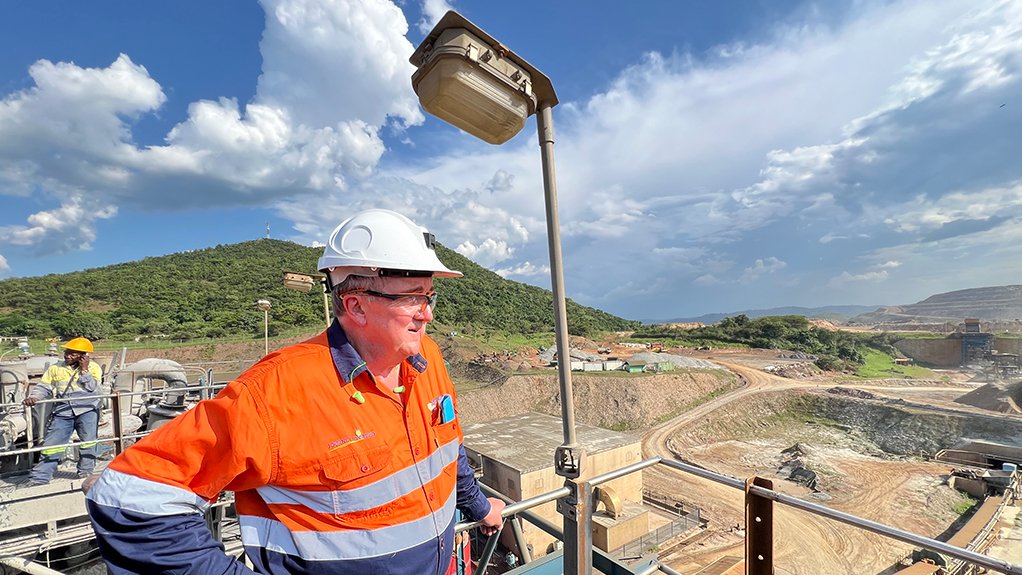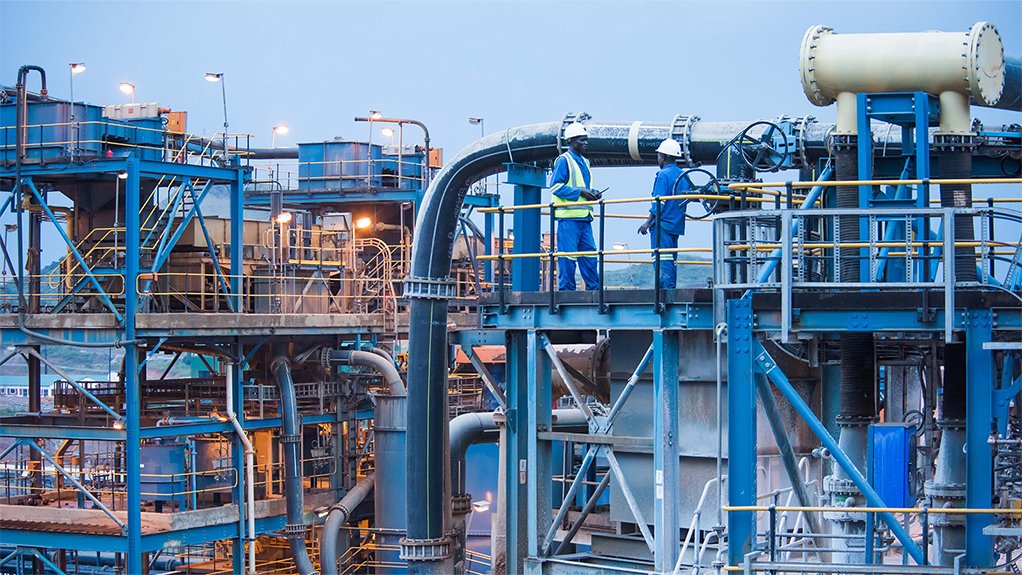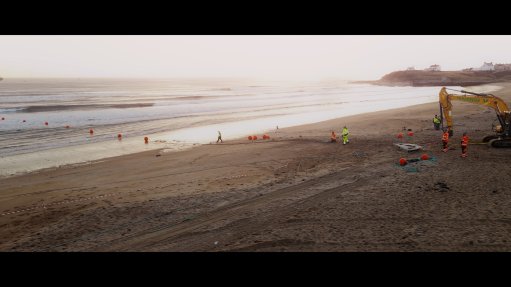Renewables component of DRC gold mine’s energy mix to hit 85% next year



Barrick Gold President and CE Dr Mark Bristow, who says Kibali was built on partnerships with its stakeholders.
Kibali is elevating its status as one of Barrick’s top-tier mines — those capable of producing 500 000 oz or more of gold for at least 10 years at a cost below the industry average.
The reputation of the large Kibali gold mine, run by Barrick Gold in the Democratic Republic of Congo (DRC), is being significantly enhanced by its far-reaching contribution to the development and upkeep of key infrastructure, the building of a vibrant local socioeconomy, protection of the environment, restoration of game in national parks, and even the revitalisation of an attention-catching coffee cultivation opportunity.
Three hydropower stations have put Kibali in the green energy drive lead, with more than 80% of the mine’s power provided by renewable-energy sources, which will be further increased by an upcoming solar power plant. Generated is 40.16 MW of power at an average cost of $0.10/kWh.
A previously nonexistent economy has been interestingly uplifted by the mine, which has built and still maintains 300 km of road, including the DRC’s connection to the Ugandan border.
Meanwhile, community growth from 30 000 to more than 500 000 people has resulted in multiple partnerships with local businesses, such as the all- Congolese team that built the Azambi hydropower station.
Nationals make up 95% and expatriates 5% of Kibali’s work force and it continues to increase local content in its support of 500 DRC companies.
Since 2009, payments to local contractors and suppliers have amounted to $2.78-billion and investment in the recruitment and training of Congolese nationals continues.
Kibali has also written a new chapter in its long support for Africa’s biodiversity and the Garamba National Park by introducing a sustainable population of white rhinos in partnership with African Parks and the DRC people.
Procurement of long-lead items for the upcoming solar plant and energy storage is under way, which will increase renewable- energy penetration to 85% (from 81%), decreasing thermal power generation fuel consumption by 53%.
Kibali’s KCD UG Deeps expansion project being implemented confirms the high-grade down-plunge extension from currently defined reserves, with the deposit remaining open at depth.
Commitment to biodiversity preservation continues, with finalisation of a feasibility assessment to transfer the first additional 30 white rhinos to Garamba to be completed shortly.
Execution of the Cahier des Charges initiative, officially launched in 2023, has now seen the completion of five projects, with four more nearing completion and three in progress. The investment for this initiative over five years totals $8.9-million.
Execution of community development projects continues with 34 projects already completed out of 44 projects launched.
The 2024 fresh-water abstraction target from the Kibali river is 10%, down from last year’s 14%, and more than 90% of non- hazardous waste is recycled.
In May, Kibali management visited Loyola University in Kinshasa, which has engineering faculties, with the aim of extending its partnership to secure future human resource growth. Two Kibali bursars have completed their master’s studies in mining engineering from Lubumbashi University and engagements continue with key stakeholders to drive and manage local employment.
Targeted is the planting of 1 000 ha of coffee in the Haut-Uele region by 2027 as well as the establishment of a coffee facility to process beans for export and sale within East Africa. By the end of 2025, two-million tons of beans are planned to be processed. The area has favourable conditions for coffee cultivation, including good rainfall. The aim is to revitalise the once vibrant Robusta coffee industry, for which Isiro was once renowned.
“We are not only looking after our host countries in the present but also to their national heritage in the future,” Barrick Gold president and CE Dr Mark Bristow told media and other stakeholders.
Kibali, he added, was not only Africa’s largest gold mine but also its most automated.
“When we started building Kibali 14 years ago, this was one of the DRC’s most underdeveloped regions. The value we created and the infrastructure we built here have since transformed it into a new economic frontier and a flourishing commercial hub.
“We’ve promoted this growth through investment in community development and partnering with local businesses we have mentored. Our Azambi power station, for example, was built by an all-Congolese team,” Bristow said.
“In addition, Kibali has written a new chapter in Barrick’s long support for Africa’s biodiversity by partnering with African Parks and the DRC government to re-introduce a sustainable population of white rhino to the DRC’s Garamba National Park, which the mine also supports in other ways. This means that, together with the Barrick coffee project in the Haut-Uele region aimed at revitalising the once vibrant Robusta coffee industry which Isiro was once renowned for, we are not only looking after our host countries in the present but also to their national heritage in the future.”
Bristow said Kibali was built on partnerships with its stakeholders, notably the government and its host communities. Based on its success, Barrick was ready to invest in new gold and copper opportunities in the DRC, provided the government continued to build alongside it.
There is continued focus on extending Kibali’s life-of-mine through exploration and resource conversion programmes to extend its tier-one status.
The next steps in the automation drive in the underground mine are being fast-tracked to empower operators.
Article Enquiry
Email Article
Save Article
Feedback
To advertise email advertising@creamermedia.co.za or click here
Comments
Press Office
Announcements
What's On
Subscribe to improve your user experience...
Option 1 (equivalent of R125 a month):
Receive a weekly copy of Creamer Media's Engineering News & Mining Weekly magazine
(print copy for those in South Africa and e-magazine for those outside of South Africa)
Receive daily email newsletters
Access to full search results
Access archive of magazine back copies
Access to Projects in Progress
Access to ONE Research Report of your choice in PDF format
Option 2 (equivalent of R375 a month):
All benefits from Option 1
PLUS
Access to Creamer Media's Research Channel Africa for ALL Research Reports, in PDF format, on various industrial and mining sectors
including Electricity; Water; Energy Transition; Hydrogen; Roads, Rail and Ports; Coal; Gold; Platinum; Battery Metals; etc.
Already a subscriber?
Forgotten your password?
Receive weekly copy of Creamer Media's Engineering News & Mining Weekly magazine (print copy for those in South Africa and e-magazine for those outside of South Africa)
➕
Recieve daily email newsletters
➕
Access to full search results
➕
Access archive of magazine back copies
➕
Access to Projects in Progress
➕
Access to ONE Research Report of your choice in PDF format
RESEARCH CHANNEL AFRICA
R4500 (equivalent of R375 a month)
SUBSCRIBEAll benefits from Option 1
➕
Access to Creamer Media's Research Channel Africa for ALL Research Reports on various industrial and mining sectors, in PDF format, including on:
Electricity
➕
Water
➕
Energy Transition
➕
Hydrogen
➕
Roads, Rail and Ports
➕
Coal
➕
Gold
➕
Platinum
➕
Battery Metals
➕
etc.
Receive all benefits from Option 1 or Option 2 delivered to numerous people at your company
➕
Multiple User names and Passwords for simultaneous log-ins
➕
Intranet integration access to all in your organisation


















